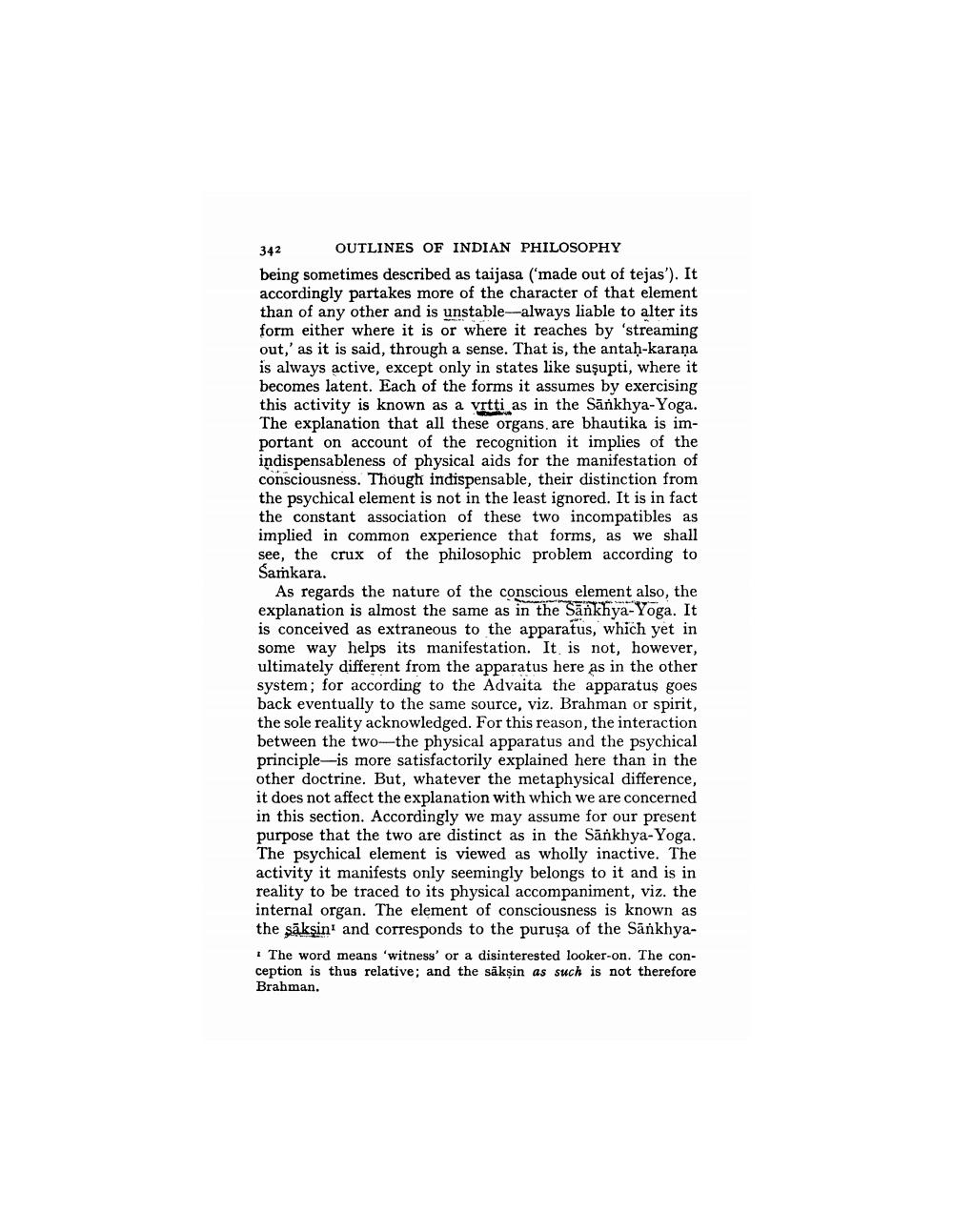________________
342 OUTLINES OF INDIAN PHILOSOPHY being sometimes described as taijasa ('made out of tejas'). It accordingly partakes more of the character of that element than of any other and is unstable--always liable to alter its form either where it is or where it reaches by 'streaming out,' as it is said, through a sense. That is, the antah-karaņa is always active, except only in states like suşupti, where it becomes latent. Each of the forms it assumes by exercising this activity is known as a vrtti as in the Sankhya-Yoga. The explanation that all these organs, are bhautika is important on account of the recognition it implies of the indispensableness of physical aids for the manifestation of consciousness. Though indispensable, their distinction from the psychical element is not in the least ignored. It is in fact the constant association of these two incompatibles as implied in common experience that forms, as we shall see, the crux of the philosophic problem according to Samkara.
As regards the nature of the conscious element also, the explanation is almost the same as in the Sankhya-Yoga. It is conceived as extraneous to the apparatus, which yet in some way helps its manifestation. It is not, however, ultimately different from the apparatus here as in the other system; for according to the Advaita the apparatus goes back eventually to the same source, viz. Brahman or spirit, the sole reality acknowledged. For this reason, the interaction between the two--the physical apparatus and the psychical principle-is more satisfactorily explained here than in the other doctrine. But, whatever the metaphysical difference, it does not affect the explanation with which we are concerned in this section. Accordingly we may assume for our present purpose that the two are distinct as in the Sankhya-Yoga. The psychical element is viewed as wholly inactive. The activity it manifests only seemingly belongs to it and is in reality to be traced to its physical accompaniment, viz. the internal organ. The element of consciousness is known as the sākşin' and corresponds to the puruşa of the Sankhya
The word means 'witness' or a disinterested looker-on. The conception is thus relative; and the saksin as such is not therefore Brahman




